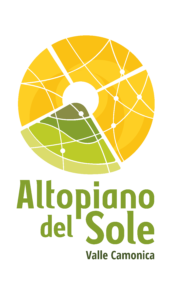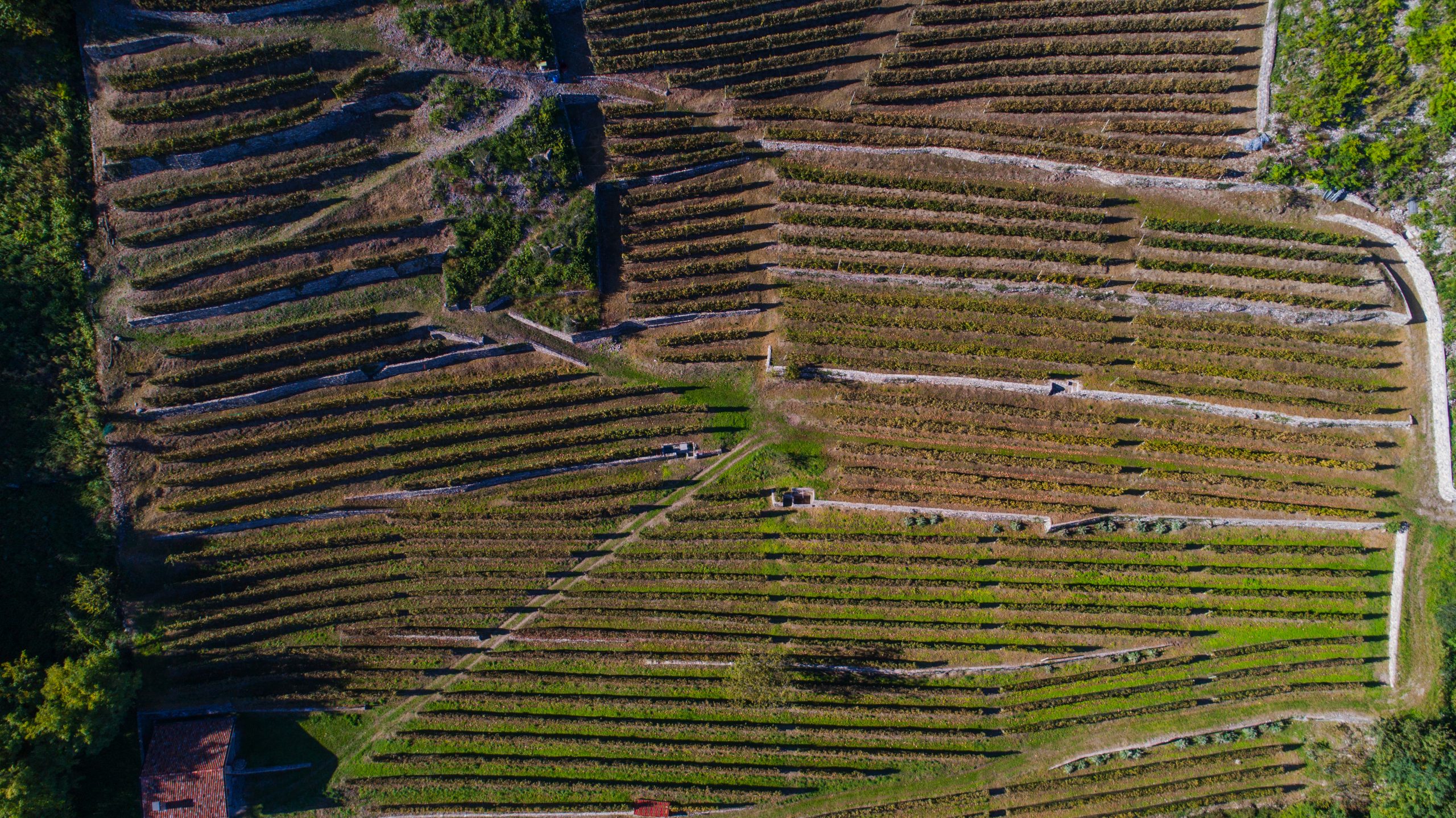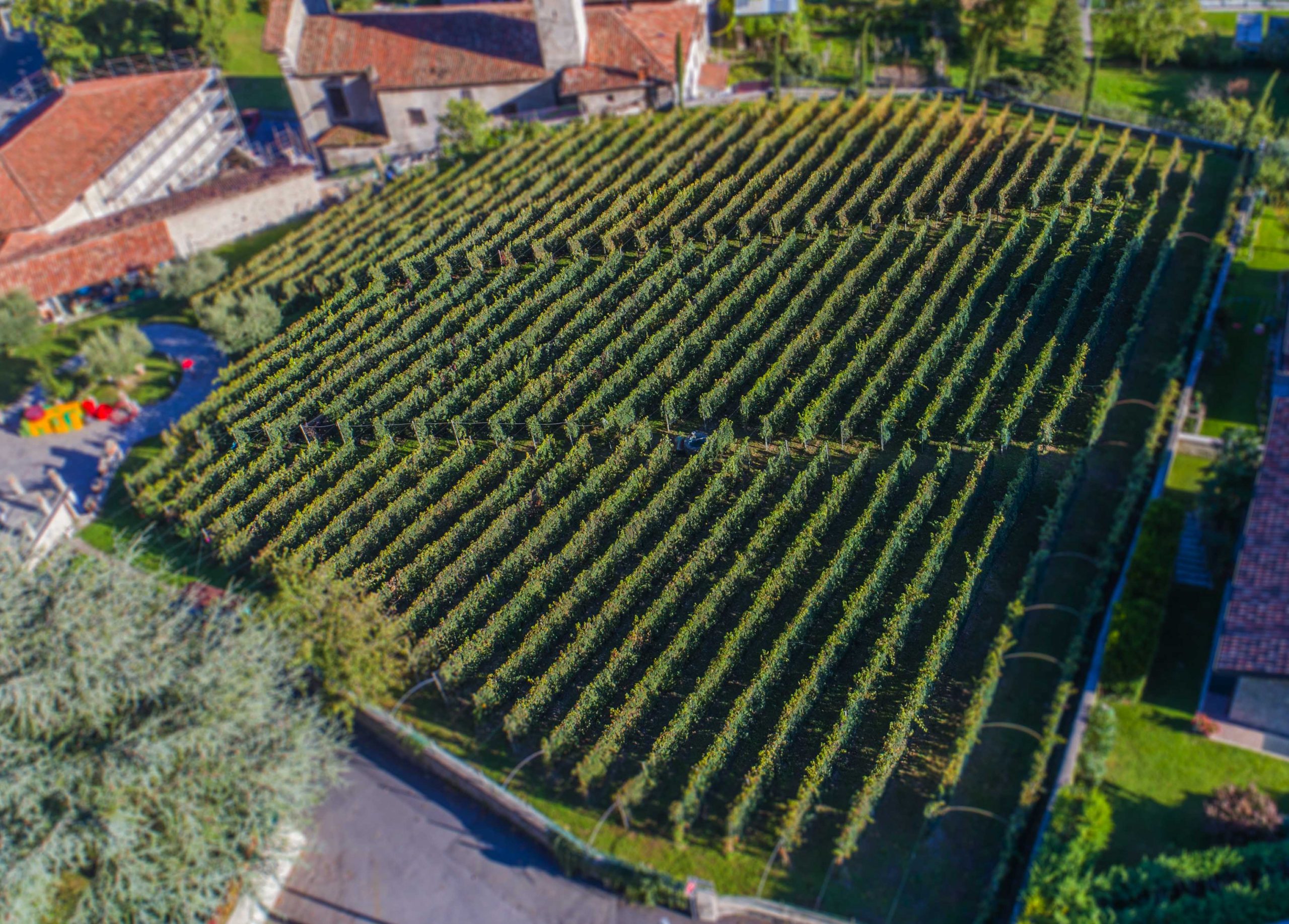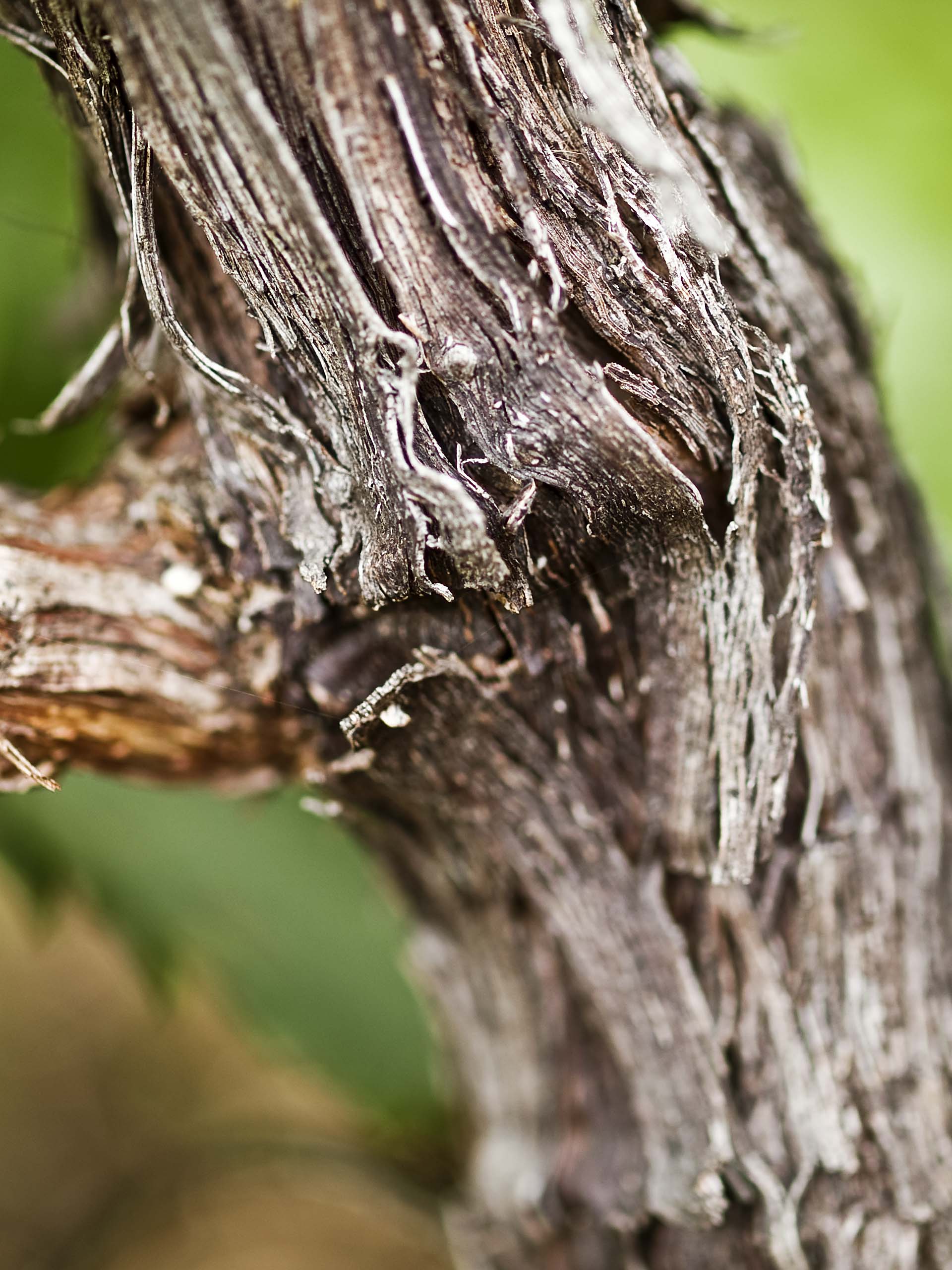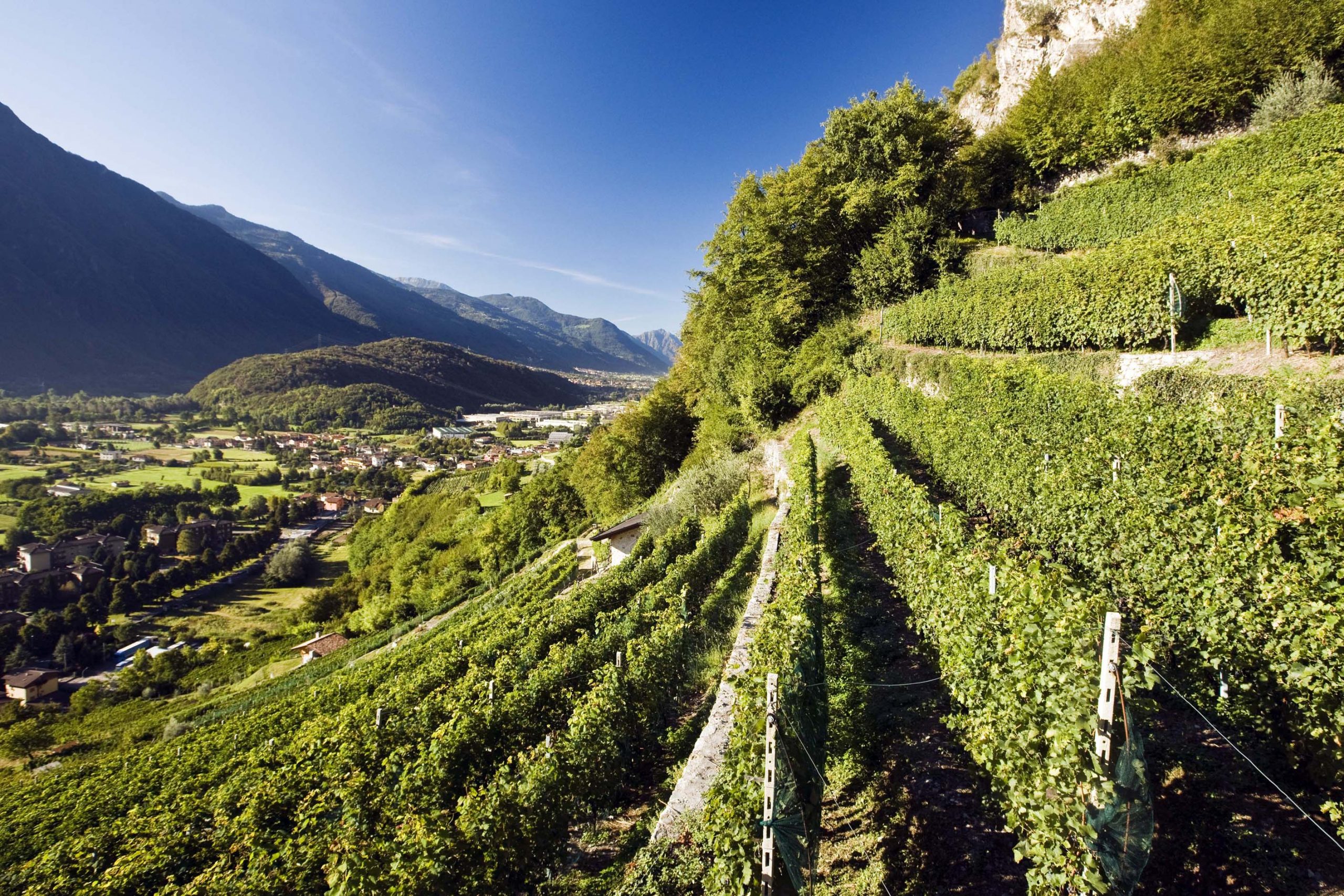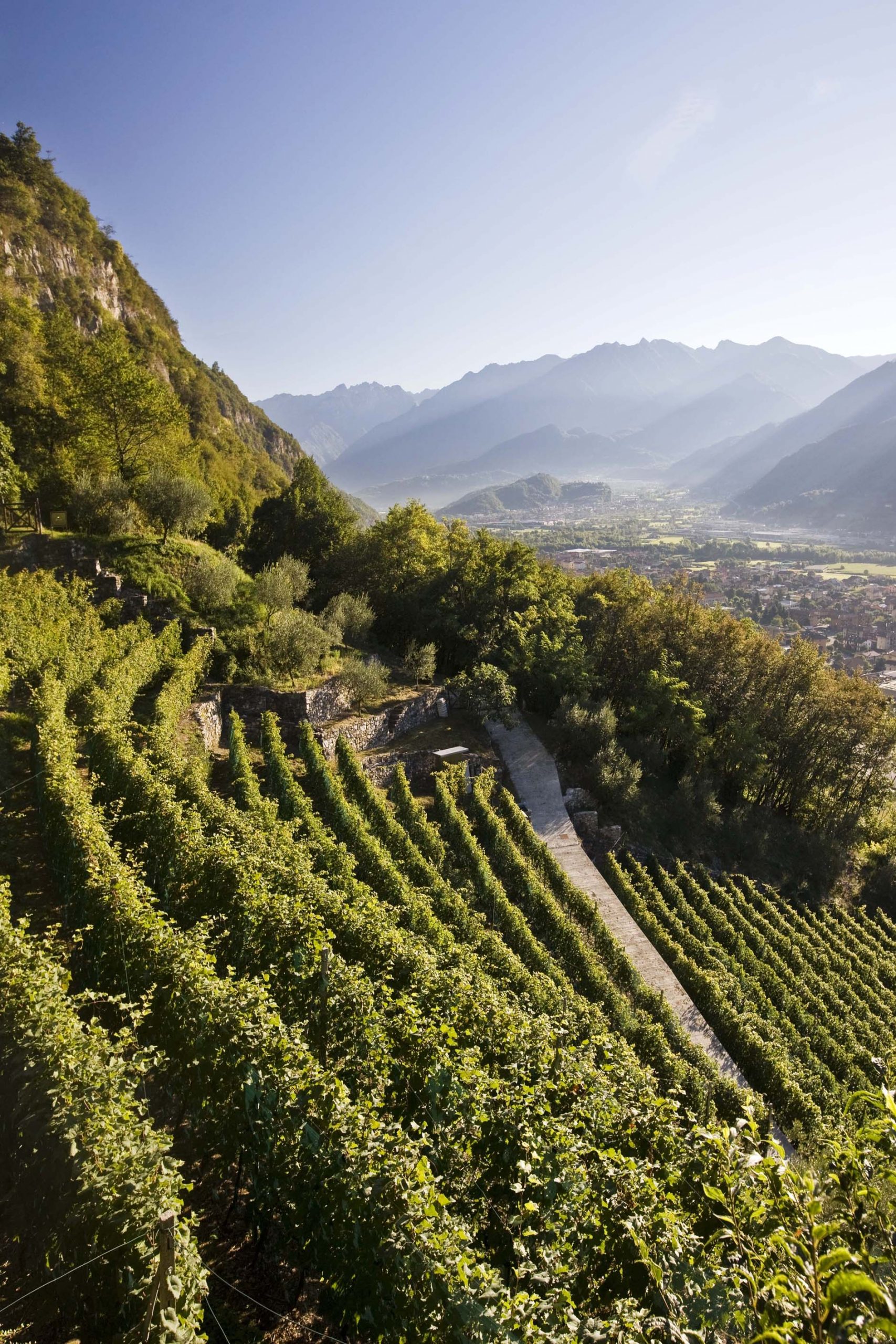THE ALTOPIANO AND HIS VINEYARDS
The Altopiano del Sole is a land of wine and vineyards. A centuries-long tradition from the early Middle Ages leads us to the present day, and the importance of vineyard cultivation and wine production in Valle Camonica.
VINEYARDS IN THE MEDIEVAL AGE
The first stop in the history of the vineyards of the Altopiano del Sole is a document dated 845, in which reference is made to an existing vineyard in Breno. In the inventory of property owned by the women’s monastery of San Salvatore-Santa Giulia in Brescia, dating from 905-906, a number of courts in Valle Camonica are mentioned including several vineyards cultivated by servants, from which a total of 65 amphorae of wine were to be collected. The monastery of San Salvatore di Cemmo and several valley parishes also owned land with vineyards, entrusted to servants or tenants from whom they collected rent and tithes in the form of predetermined quantities of wine. In the late Middle Ages, it was no longer only monasteries and ecclesiastical bodies that devoted themselves to the cultivation of vines and the production of wine, but also noble families, most notably the Griffi family of Losine.
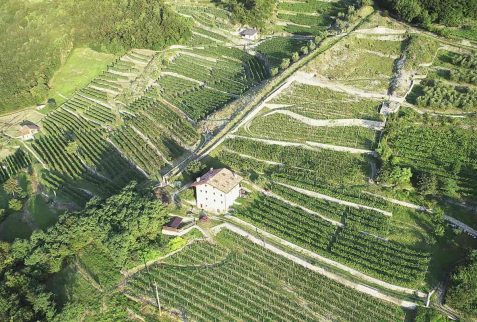
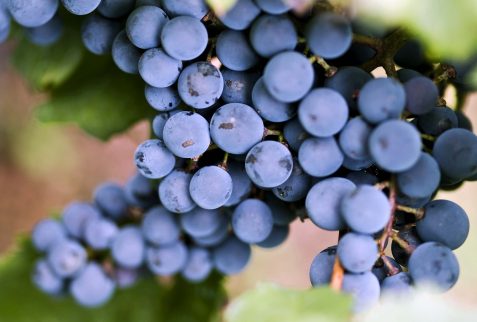
VINEYARDS IN THE MODERN AGE
From Father Gregorio Brunelli (1698) we get some valuable information about the methods of cultivation used at that time in Valcamonica: “The vineyards are, or imprisoned between walls in vegetable gardens, or tied to fruit-bearing trees in the fields, or spread out in high arbors around the houses and over the roads, and there is no lack of vines in the manner of thickets with such skill cultivated that from the sites themselves completely stony, wonderfully fruitful grapes are produced.”.
The first document in which the presence of vineyards on the mountain side of Piancogno is found is a deed dated the end of the 11th century. The text – aimed at settling the centuries-long dispute between the inhabitants of Val di Scalve and those of Borno for the ownership of Mount Negrino, rich in pastures – mentions a raid carried out by the Scalvini in the territory of Borno (most likely on the Piancogno side), which ended with the destruction of twelve presses and several vineyards. In the Statute of the community of Borno of 1446, in Article 4, the prohibition of grazing animals, especially goats, in the vineyards of its territory is stipulated. From Giovanni da Lezze’s cadastre of 1609 we learn that “in one part only” of Borno (evidently concerning the mountain side of Piancogno) wines “grateful to the taste…” are produced.
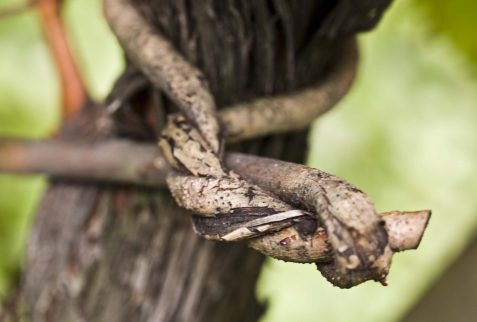
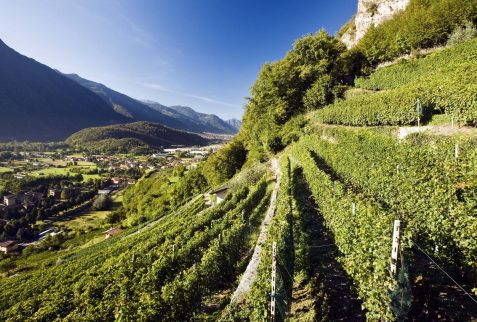
PIAMBORNO AND ITS VINEYARDS IN THE NINETEENTH CENTURY
In 1801, Lodovico Capoferri reminds us that, under the convent of the Annunciata towards Pian di Borno “which lies on the Valleriana road, there are Vines with great care cultivated, which make an excellent wine.” We also know that, in the early 1800s, vines were cultivated in the garden of the Annunciata convent and a winepress was placed in a storeroom.
In the first half of the 19th century, Pian di Borno was, among the municipalities of Valle Camonica, the one with the greatest wine production. The quality of the product varied from village to village, but also within the same village. This was based both on exposure to the sun and the chemical and physical characteristics of the soil, and on the system of vine cultivation. It could be allowed to grow up in height, with the advantage of growing other important products between the rows in a subsistence economy, but at the expense of quality yield. Alternatively, the vine was grown low, resulting in grapes with a higher alcohol content. Wine produced in “ronchi a murelli” – that is, terraces on the mountainside exposed to the sun – was generally of better quality, and had a higher market value than wine produced in flat areas.
MEMORIES
he terraces occupied by vines leaning against chestnut poles and, mostly along the cavedagne, by willows from which the precious htropèi (wicker) used to tie the vine shoots were made, and by fruit trees, interspersed now and then with farmhouses and cadèi (rural buildings), have marked for centuries and still characterize the mountain side of Piancogno halfway up the mountainside. This landscape, shaped over time by human hands, has repeatedly been the object of admiration: B. Rizzi in 1870 calls the hill of Pian di Borno “…superb with vineyards, olive trees, almonds and fruit of every species…” A. Cozzaglio, referring to Erbanno and Pian di Borno, wrote in 1895:“One sees walls rising above walls, long arbors and rows lining up, and hovels springing up near those palms of land, showing themselves attached to the cliff like wasp nests: all cultivated, all enjoyed by those industrious cultivators to whom, more than fatigue it is grievous to see soil and sunshine heat wasted to feed brambles”.
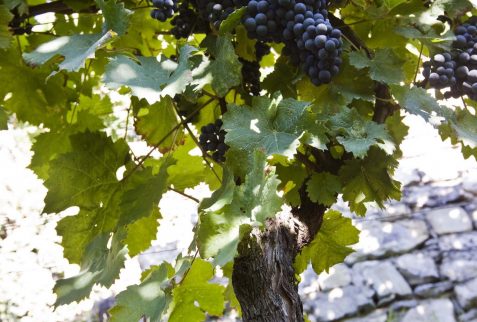
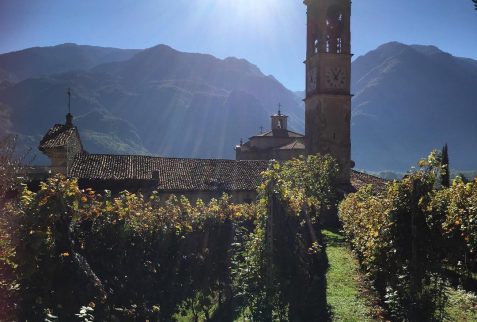
STORIES OF LIFE AND VINES
In this part of the mid-valley, until a few decades ago, one could still catch a glimpse of what local life was like in the past at the beginning of autumn. Here the song of the grape pickers resounded, old people could be seen detaching bunches of grapes from the vines, young people carrying baskets full of bunches of grapes, clusters of women removing spoiled grapes on tables leaning against vats, and children wandering festively through the vineyards. Along the bià dèle ólte (vaulted road), which connects the plain to the Via Valeriana that winds halfway up the hillside, carters would descend with oxen hitched to carts. After filling the carér (large elongated barrels used for transport) with grapes, they would slowly climb back up to Borno via the Lanico lane.
Stories of vines, but also of life: the vineyards of the Altopiano del Sole tell love stories, such as that of Giovan Antonio Gheza, whose family was originally from Borno. In the early 19th century, the young Gheza married a certain Isonni, from whom he inherited a farmhouse with adjoining vineyards, in the area called “Lanzato.” His grandson Maffeo, born in Pian di Borno and a lawyer by profession, transformed the rustic building into a villa in the early 1900s. At the same time, he devoted himself with passion to the cultivation of the vineyards, extending them as far as under the rocks. Thanks to his intervention he curiously contributed to enriching the landscape, as we read in an article that appeared in 1910 in the magazine “Illustrazione Camuna”: “… up on the hills in fact beyond the vine, olive trees thrive, and in the villas Rusconi, Gheza, Mauri, Dabbeni flourish even in winter freely the tropical plants, and flowers and agaves triumph there in a wonderful way”.
FROM “LANZATO” TO “I CULTIVAR DELLE VOLTE”
It is no coincidence, therefore, that in the 1960s, in this area of Valle Camonica particularly suited to viticulture, the first modern wine production, bottling and marketing company arose on the properties of the Gheza family. he original “Lanzato” brand name, along with the land, winery and some buildings, has now been acquired by the Bignotti-Luscietti family’s “I cultivar delle volte” company.
Photographs included in this in-depth study were provided by “Cantine Bignotti” owner of the Copyright for the images. Reproduction prohibited.
